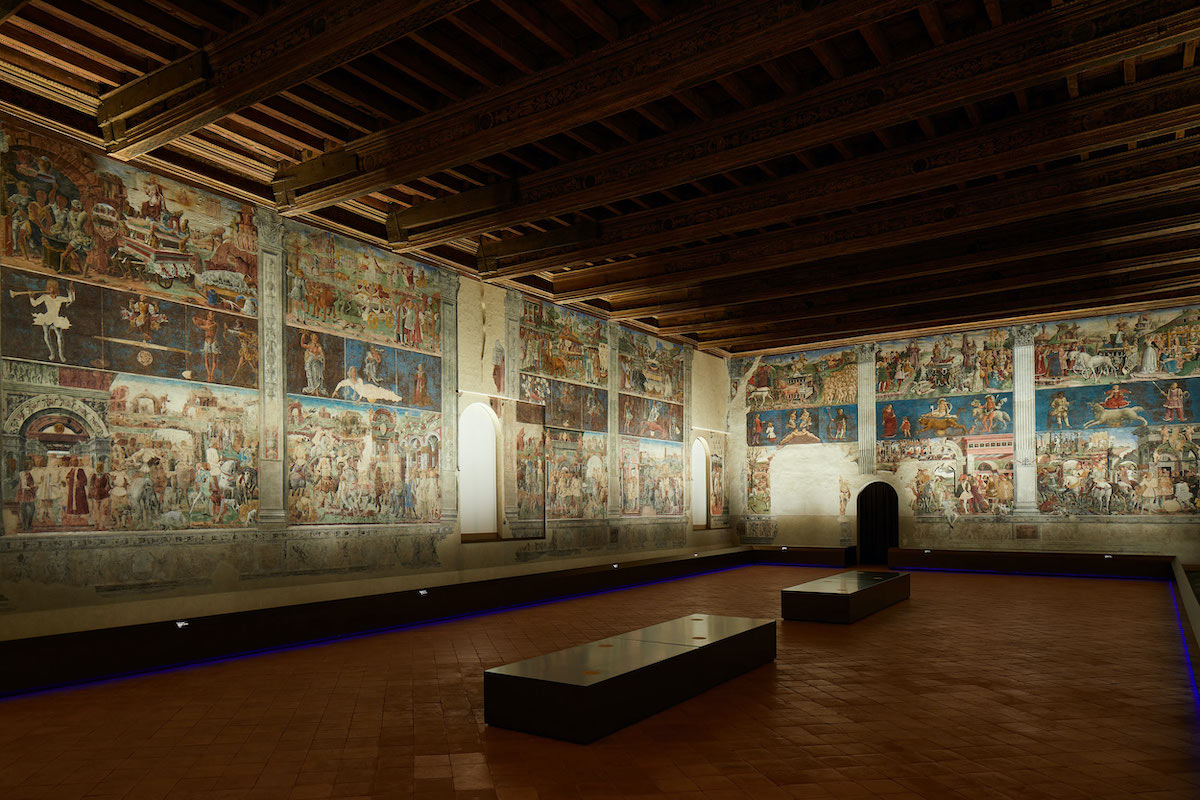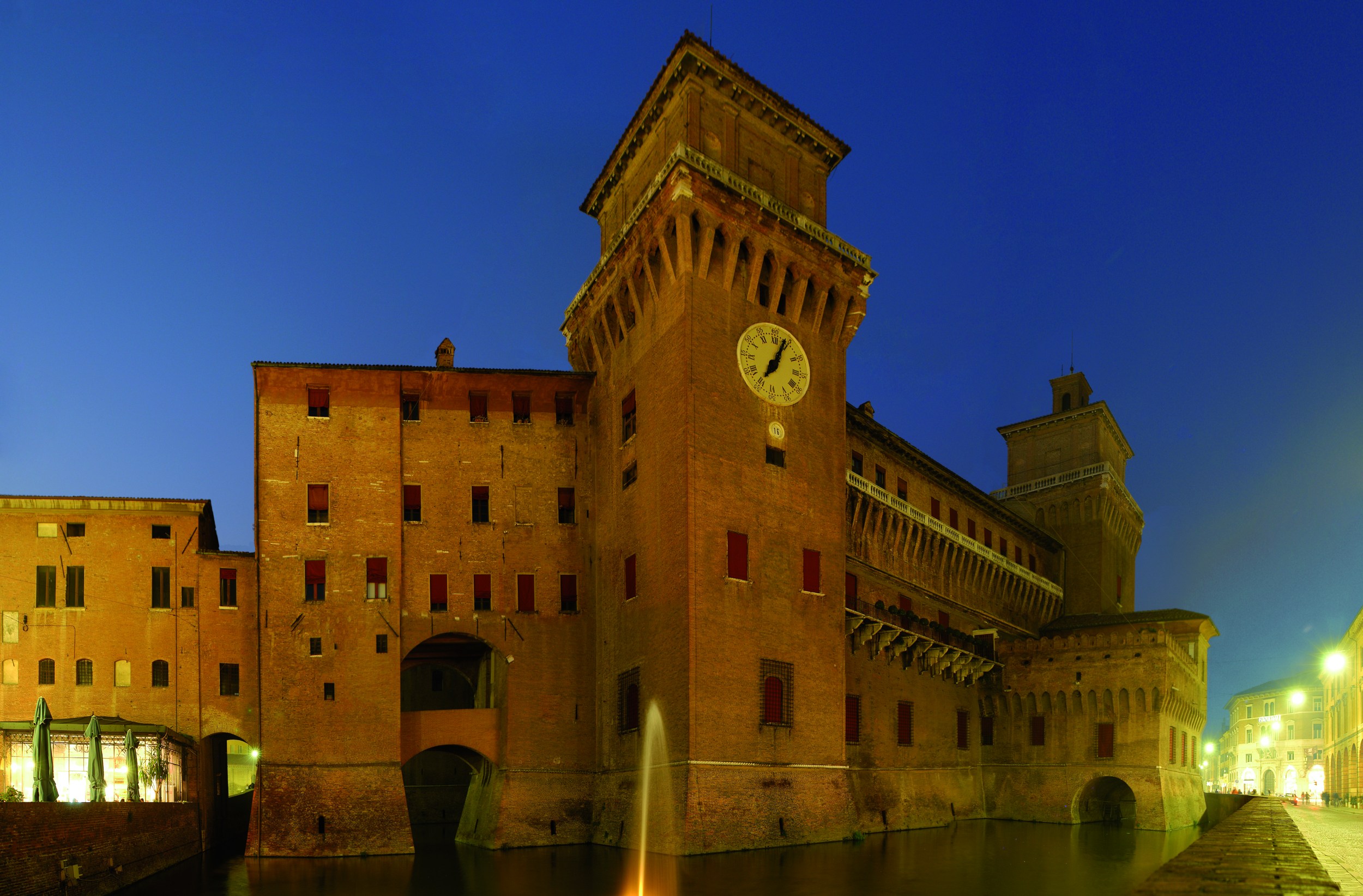
The travels of Lucrezia Borgia: art, history and nature, is a trail that narrates the journey of Lucrezia Borgia on 1 February 1502, when she travelled with her sister-in-law Isabella of Mantua to reach her husband Alfonso I d’Este, duke of Ferrara from 1505 to 1534.
There is a cycle path along the river Reno and its artificial canals as far as Torre della Fossa, the place where Alfonso d’Este met his wife. The story tells of a memorable encounter: Lucrezia Borgia, accompanied by many courtiers, travelled by boat from Rome, where she had already married Alfonso by arrangement. The bride disembarked on the shores of the canal, kissing the hand of the duke who gave her an equally warm welcome. She then re-boarded the sumptuous “bucintour” (state barge) of the Este family, which was headed for Ferrara, while a large gathering of Este courtiers and gentlemen climbed the embankments—just as we will be doing by bike.
The itinerary begins at the train station of Poggio Renatico. Follow Via Stazione as far as Via Matteotti, where you turn left towards Piazza Castello, where you will find the ruins of the Lambertini Castle, currently closed for consolidation and refurbishment works. You continue along Via Matteotti, past Torre Fornasini. Turn right into Via Marconi, and follow the road as far as the railway line. There, a cycle path leads southwards towards Via Delvia, Via Chiesa Nuova and Via San Sebastiano. You then reach the junction with the provincial road Via Bologna. Follow it for a short stretch as far as the left turn to Via Ca’ Bianca, on the right-hand side of the Reno river. Following this road, you come to Canale della Botte. Turn onto Via Garibaldi, which becomes Via Riolo before it reaches the town of Malalbergo.
In Malalbergo, you cross Via Nazionale and then continue along Via Pedrazzoli. Follow Via Pedrazzoli which runs alongside the canal, Canale della Botte. At the junction with Via Valle, take a left without crossing the canal. Then follow the course of Canale della Botte on its left-hand bank, without returning to Malalbergo.
This point is the start of a U-shaped cycle path, about 7 km long. The outward journey follows the course of Canale della Botte and on the way back, past the lock, it follows the right-hand side of the Reno river with a splendid view of the large natural amphitheatre which can be seen as far as Malalbergo. You then return along Via Nazionale and cross the Reno, on the bridge that joins Malalbergo and Gallo.
Follow Via Nazionale for a short stretch, then turn left onto Via Giuseppe Fanin. You then turn onto Via Gallo, which becomes Via Pio: both roads follow the course of a canal. This is a straight section and a particularly scenic and pleasant part of the trail.
At the end of Via Pio, turn right onto the provincial road SP25, which you follow for a short stretch before turning left onto the quiet and peaceful Via Imperiale, which ends right next to the tower, Torre dell’Uccellino.
After the tower, turn right onto the provincial road SP8 (Via Poggio Renatico) and return to Via Nazionale, which you then follow back for a short distance towards Malalbergo, until the left turn onto Via Pasini Bruno and Via Corazza. Turning left onto Via Chiesa, you come to San Martino. On the right, you will see the Parish Church of San Martino, whose high altar contains a stunning Nativity attributed to the painter Giuseppe Mazzuoli, Il Bastarolo.
On leaving San Martino you follow Via Chiesa as far as Torre della Fossa. Turning left onto Via Giuseppe Fabbri, just past the little church of San Giuseppe you come to a meadow. Here you can see close-up the Po Morto di Primaro, which is thought to be the disembarkation point of Lucrezia Borgia.
Continue along Via Fabbri, retracing the path along the river Po Morto di Primaro, until you reach the city of Ferrara. Turning right onto Via Otello Putinati, and shortly afterwards right again into Piazza San Giorgio, you can admire the Basilica of San Giorgio. Following Via San Maurelio, you cross the Po di Volano and enter the centre of Ferrara from Via Porta Romana. In the historic centre, you can discover the treasures kept in Palazzo Schifanoia on Via Scandiana, the Monastery of Corpus Domini between Via Pergolato and Via Campofranco, and the museum at Casa Romei on Via Savonarola. Heading down Via Montebello, Corso Porta Mare and Corso Ercole I d’Este, you will pass the National Art Gallery of Ferrara which contains the 16th-century frescoes forcibly removed from the Fornasini tower in Poggio Renatico. Corso Ercole I d’Este leads to the Estense Castle of Ferrara. From there, you follow the road down to the Harbour on the Burana canal.
TECHNICAL INFO
Distance: 46.7 km
Time: 4 h 07 min
